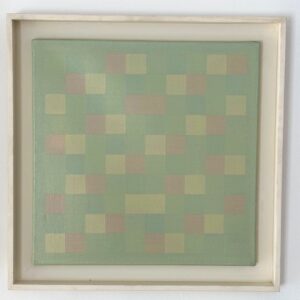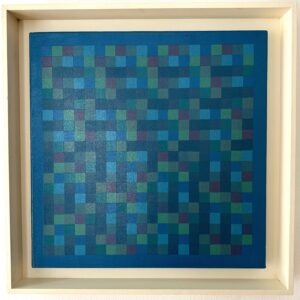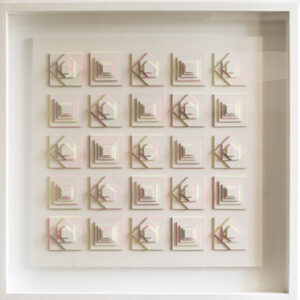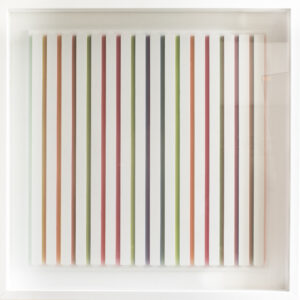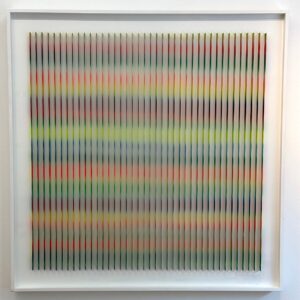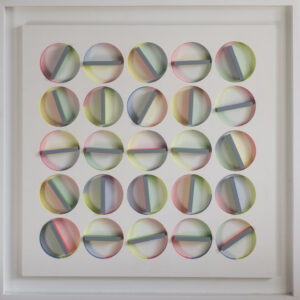Rudolf Kämmer uses a strictly constructive concrete design vocabulary. Since the end of the 1950s, Kämmer has developed his ideas rendering basic geometric forms on graph paper with mathematical precision, while his colours, used sparingly, make his works glow and lift them up to an emotionally experienceable plane of existence.
In 1961, Kämmer belonged to the ‘Neue Tendenzen’ movement, led by Almir Mavignier at first, which united many European artists or groups of artists that devoted themselves, in accordance with the spirit of the 1960s, to art based on structures and screens, Light Art, Kinetic Art and Op Art. Structures, screens, Superzeichen (super-signs), progressions – are the chief motives of Rudolf Kämmer’s comprehensive oeuvre. He challenges our cognitive ability with his canvases and object paintings made of wood. Depending on the incidence of light, or the position of the beholder, the impact of his object-like works changes immensely.
From 21st June, Quittenbaum is going to present canvases, ‘Kugelbilder’, textured paintings and object paintings from the 1960s until now. So-called ‘Spielobjekte’ (‘Playthings’) invite the beholder to take part in the genesis of an artwork. Accentuated elements of wood, gutters, rods, crosses or squares, can be turned and adjusted. The passive art consumer is thus turned into a self-confident player who can help shape the effect of the artwork in line with the vanguard ideas of the 1960s.
Rudolf Kämmer (born in Rudolstadt in 1935) studied at the Academies of Fine Arts in Dresden and Leipzig before coming to Munich to study painting under Ernst Geitlinger from 1957 – 1964. His works can be found in numerous German museums, for example the Museum für Konkrete Kunst, Ingolstadt, Kunsthaus Rehau and Bayerische Staatsgemäldesammlung Munich.

The play with geometric forms and constructivist compositions are among the most important avant-garde concepts in visual art and design in the 20th century, just think of Malevich, De Stijl and Bauhaus. Under the title ‘Rebellious Geometry’ we juxtapose three artistic positions that come at very different personal statements based on mathematical considerations, principles of symmetry and collages of basic geometric forms.
